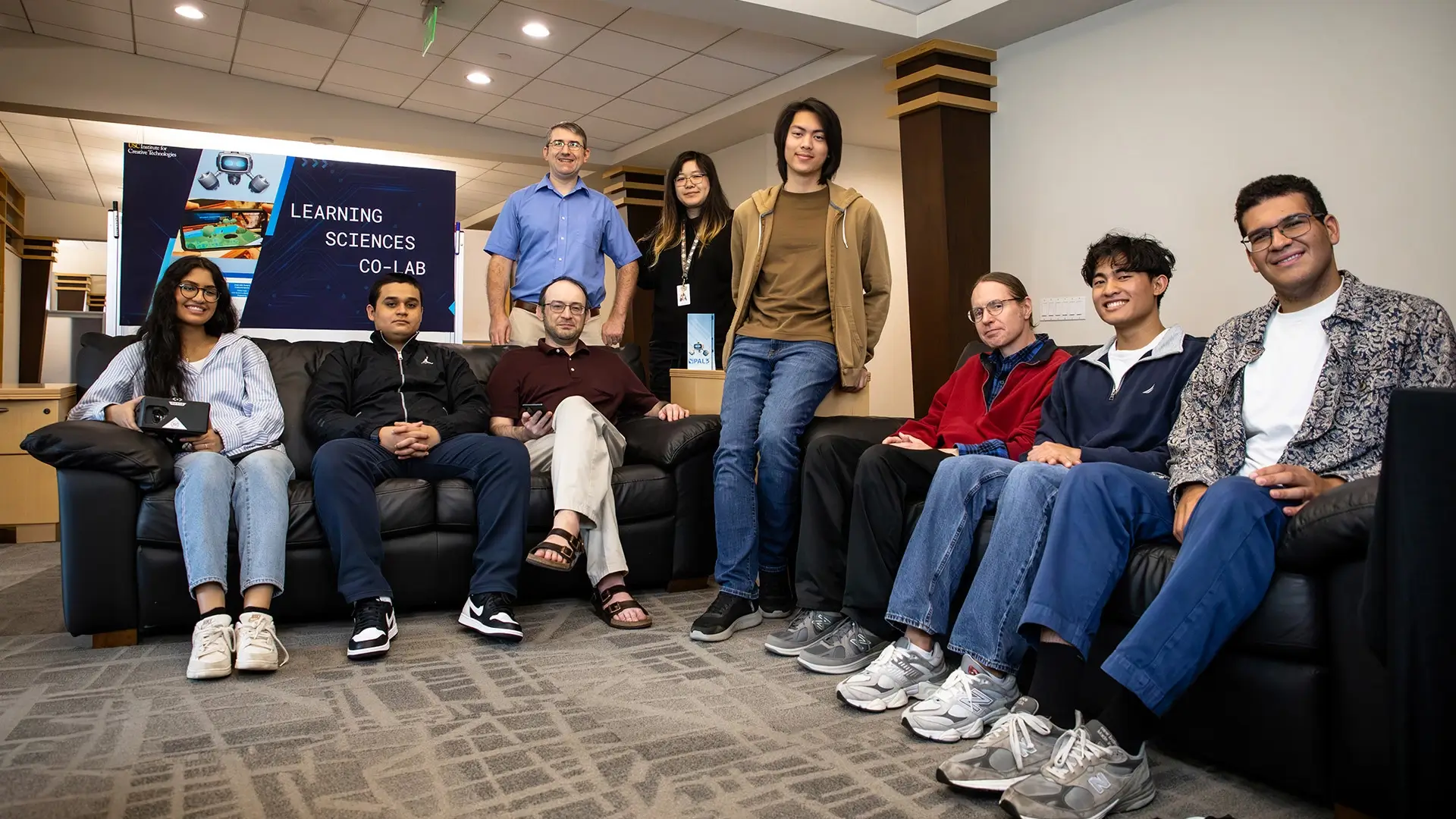By Dr. Benjamin Nye, Director, Learning Sciences Lab, USC Institute for Creative Technologies
As summer approaches, I can feel the energy building at the Learning Sciences Lab. We’re about to welcome a new cohort. These will include student researchers from ICT’s internships program; teachers from the Research Experiences for STEM Educators and Teachers (RESET) organized by the Army Educational Outreach Program (AEOP), and United States Military Academy at West Point Cadets. The combination of all three disparate groups will help us push the frontiers of educational AI.
For me, our interns and USMA Cadets represent the future of research — and if last year’s cohort taught me anything, it’s that their perspectives reshape entire projects in ways I’d never anticipated.
This summer, our research efforts center around two ambitious projects:
PAL3 Any-Time Anywhere (ATA) is our next-generation educational content initiative. Here, we’re building AI-powered authoring tools that allow teachers to transform passive learning resources — like videos and readings — into dynamic, active learning experiences. Our long-term goal is deceptively simple: make the right thing the easy thing. We want to enable rapid creation of AI tutoring dialogues and learning activities that align with evidence-based educational principles. As part of this, we’re also helping teachers to use and evaluate, where PAL3 increases AI competencies as part of the AI-UP track of Army AIRCOEE (AI Research Center of Excellence in Education).
Second, to address priorities from the Office of Naval Research and the Navy N17 Culture and Force Resilience Office, our GAIMA (Generative AI for Micro-Tailored Adaptation) project tackles another key challenge: personalization all the way down to specific readings or questions. Instead of delivering one-size-fits-all training, we’re generating content variations tailored to a learner’s specific career path, command, and life context. The goal is to make military training not just more efficient, but more relevant — enhancing both retention and real-world impact.
Together, these projects will enable turning passive content into tutoring, and then generating versions of tutoring tailored to specific groups of learners. All with the guarantee that you can review the content for accuracy and effective teaching, before sharing it with learners.
Looking Back: Lessons from 2024’s Researchers
Reflecting on last summer, it’s hard not to feel a deep sense of pride in what our previous cohort accomplished. In 2024, we hosted 7 student researchers, 3 RESET teachers, and 6 cadets — and they left a remarkable legacy.
One of the standout initiatives was Co-Generating AI Training research from the Game-if-AI project. Students explored different approaches to AI-driven content creation — from tutoring dialogues to multiple-choice questions to question-answer pairs. Their insights laid the foundation for this year’s PAL3 ATA research and have already led to draft AI tutoring behaviors. We’re currently preparing a paper for the AI in Education 2025 workshops, co-authored with students from both the 2023 and 2024 cohorts.
Meanwhile, one student researcher, Sid Mamidanna, worked with our postdoc, Dr. Joel Walsh, on fine-tuning LLM answer classifiers which can work on teacher-created content. Their work — teaching a large language model to adaptively assess student understanding from limited examples — is critical for scalable, personalized tutoring systems.
Another intern, Sophia Khan, led the creation of a unique topographical map generation dataset as part of our AI Scenario Generation collaboration. Her research has already passed the abstract phase at I/ITSEC, and we’re co-authoring a full paper for submission. Her research combining generating and understanding maps is part of a new era for multimodal systems that understand different kinds of spatial relationships.
The Army cadets also brought great insight. Their work on the Army Writing Enhancement Tool and AI-assisted doctrine revision illuminated critical differences between academic and military writing. Where college students may focus on structure and argument, cadets emphasize the real-world consequences of clear, actionable writing — an invaluable lesson for our AI tools designed to support mission-critical communication.
We also piloted a SMART Futures Contest for undergraduate interns, where students explored research career pathways across academia, industry, and government. Encouragingly, several applied for prestigious SMART Scholarships, taking their first steps toward public service research careers.
What They Taught Us
The impact wasn’t one-way. Our interns, teachers, and cadets challenged us to rethink how we model generative AI — is it an assistant? An expert? A search engine summarizer? Getting the mental model right is crucial, not just for designing better systems, but for setting realistic user expectations.
The Army cadets, in particular, pushed us to consider how high-stakes contexts — where communication is about doing, not just knowing — change the demands we place on AI tools. These lessons are now embedded in our research approach.
Looking Forward
With the new Executive Order to bring AI into K–12 education, we’re hopeful that a future where AI meaningfully expands access to quality learning is within reach. If implemented thoughtfully, these policies could empower schools to trial AI innovations and participate in evaluating their real-world effectiveness. We’re eager to collaborate with new centers and initiatives that share this vision.
At the Learning Sciences Lab, I imagine a future where AI understands not just subject matter, but a teacher’s intent — seamlessly supporting multiple students at once without sacrificing the human touch that great teaching demands. It’s an ambitious goal, but every project this summer — from PAL3 ATA to GAIMA — brings us a little closer.
I can’t wait to see what our new researchers will build, discover, and inspire. If the past is any indication, they’re going to surprise us — and that’s exactly what makes this work so exciting.
The project or effort depicted was or is sponsored by the U.S. Government and that the content of the information does not necessarily reflect the position or the policy of the Government, and no official endorsement should be inferred.
//
